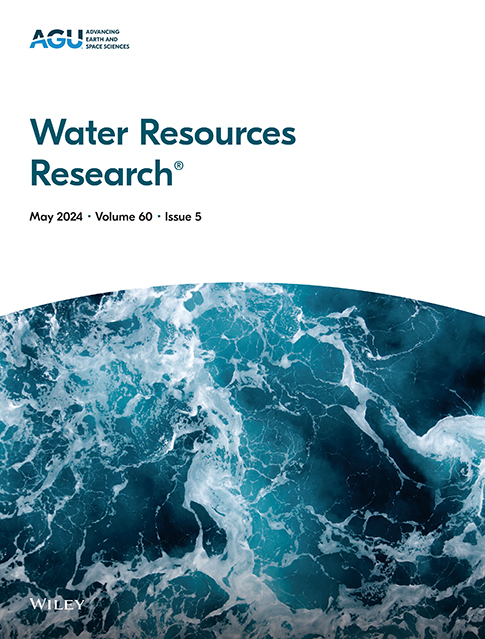Reply to ‘Comment on “A Modular Framework for Modeling Unsaturation Soil Hydraulic Properties Over the Full Moisture Range” by Tobias Weber, Wolfgang Durner, Thilo Streck, and Efstathios Diamantopoulos’
IF 4.6
1区 地球科学
Q2 ENVIRONMENTAL SCIENCES
引用次数: 0
Abstract
In Weber et al. (2019), https://doi.org/10.1029/2018wr024584 (hereafter W19), modeling soil hydraulic properties (SHP) was systematically framed and presented in a didactic, carefully thought-out approach. In doing so, the authors coined the term SHP model system/model framework, acknowledging the decade old research on effective modeling of the SHP. At the heart of the model an integral was formulated that links non-capillary saturation to capillary saturation, based on any given saturation function for the capillary part. This approach sparked the interest by Peters and Iden (2021), https://doi.org/10.1029/2020wr028397 who wrote a comment. In this reply, we providing a detailed perspective on the comment and scrutinize the opinions by Peters and Iden (2021), https://doi.org/10.1029/2020wr028397. Additionally, we use the opportunity to clarify terminology with respect to the distinction between “non-capillary” and “capillary” pore spaces. Further, the Brunswick model system presented in W19 has been implemented in the HYDRUS software suite (Diamantopoulos et al., 2024, https://doi.org/10.1002/vzj2.20326).求助全文
约1分钟内获得全文
求助全文
来源期刊

Water Resources Research
环境科学-湖沼学
CiteScore
8.80
自引率
13.00%
发文量
599
审稿时长
3.5 months
期刊介绍:
Water Resources Research (WRR) is an interdisciplinary journal that focuses on hydrology and water resources. It publishes original research in the natural and social sciences of water. It emphasizes the role of water in the Earth system, including physical, chemical, biological, and ecological processes in water resources research and management, including social, policy, and public health implications. It encompasses observational, experimental, theoretical, analytical, numerical, and data-driven approaches that advance the science of water and its management. Submissions are evaluated for their novelty, accuracy, significance, and broader implications of the findings.
 求助内容:
求助内容: 应助结果提醒方式:
应助结果提醒方式:


